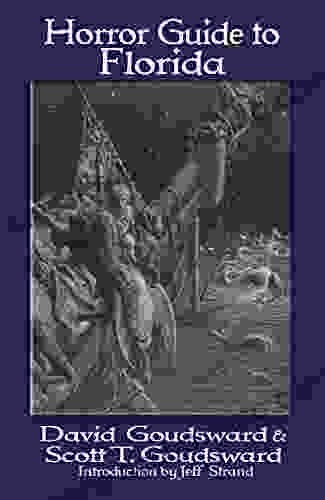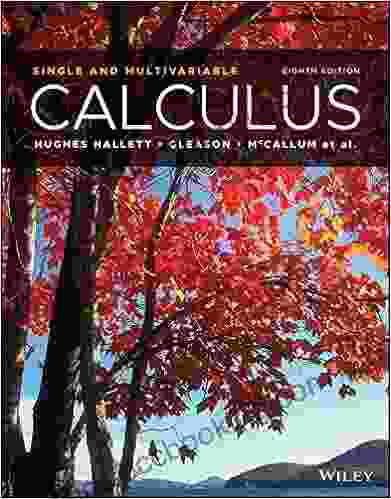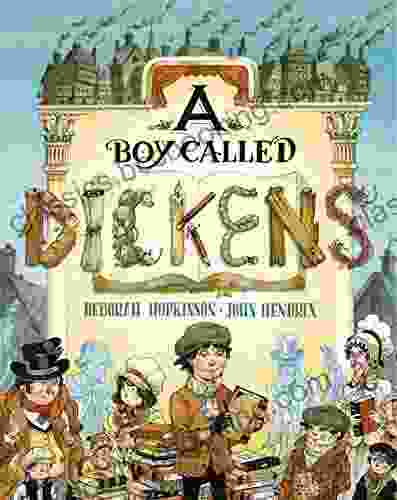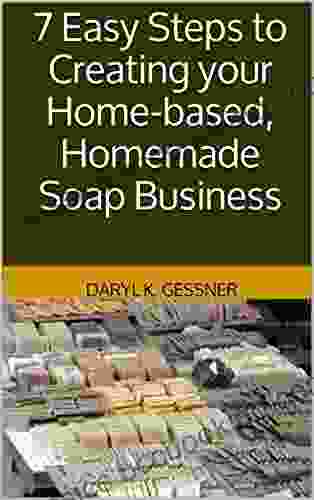Step-by-Step Beginner's Guide to Learn Programming in Days

Welcome to the world of programming, where innovation meets creativity, and the power to shape technology is at your fingertips. This beginner's guide is meticulously crafted to help you embark on your coding journey with confidence, guiding you through the fundamental concepts and practical applications of programming in a clear and concise manner. Whether you're a complete novice or have a basic understanding of coding, this guide will equip you with the knowledge and skills to transform your programming aspirations into reality within days.
4.2 out of 5
| Language | : | English |
| File size | : | 2182 KB |
| Text-to-Speech | : | Enabled |
| Screen Reader | : | Supported |
| Enhanced typesetting | : | Enabled |
| Print length | : | 106 pages |
Chapter 1: The Basics of Programming
In this chapter, we lay a solid foundation for your programming adventure. We'll explore the core concepts of programming, such as variables, data types, operators, and control flow. By understanding these building blocks, you'll gain a comprehensive grasp of the language of programming and the ability to translate your ideas into executable code.
Key Concepts:
- Variables: Containers that store values used in your programs.
- Data types: Classifications that define the type of data stored in variables (e.g., numbers, text, true/false).
- Operators: Symbols that perform mathematical or logical operations on variables or values.
- Control flow: Structures that control the execution flow of your code (e.g., if-else statements, loops).
Chapter 2: Variables and Data Types
Dive deeper into the world of variables and data types in Chapter 2. You'll learn how to declare variables, assign values to them, and understand the different data types available in various programming languages. By mastering this chapter, you'll gain the ability to store and manipulate data effectively, laying the groundwork for complex programming tasks.
Key Concepts:
- Variable declaration: How to create and name variables.
- Data type assignment: Understanding how to assign specific data types to variables.
- Primitive data types: Exploring fundamental data types such as integers, floats, and booleans.
- Complex data types: Introducing data structures like arrays and objects.
Chapter 3: Operators
Chapter 3 introduces you to the powerful world of operators, the tools that enable your code to perform calculations and make decisions. We'll cover arithmetic operators, comparison operators, logical operators, and assignment operators. By mastering these operators, you'll gain the ability to manipulate data, compare values, and control the flow of your programs with precision.
Key Concepts:
- Arithmetic operators: Performing mathematical operations (+, -, *, /).
- Comparison operators: Comparing values for equality, inequality, and more (==, !=, ).
- Logical operators: Combining multiple conditions using AND, OR, and NOT.
- Assignment operators: Assigning values to variables (=, +=, -=).
Chapter 4: Control Flow
In Chapter 4, you'll learn how to control the flow of your programs using control flow structures. We'll explore conditional statements (if-else),loops (for, while, do-while),and switch statements. By mastering these structures, you'll gain the ability to make your code respond to different conditions, iterate through data, and handle user input with ease.
Key Concepts:
- Conditional statements: Making decisions based on conditions.
- Loops: Iterating over data or executing code repeatedly.
- Switch statements: Selecting different code paths based on multiple conditions.
- Nested control flow: Combining multiple control flow structures for complex logic.
Chapter 5: Functions
Chapter 5 empowers you with the concept of functions, reusable blocks of code that encapsulate specific tasks. We'll cover how to define functions, pass arguments to them, and return values from them. By utilizing functions effectively, you'll enhance the modularity, reusability, and maintainability of your code.
Key Concepts:
- Function definition: Creating named blocks of code that perform specific actions.
- Function parameters: Passing data into functions.
- Function return values: Obtaining results from functions.
- Function calls: Invoking functions to execute their code.
Chapter 6: Input and Output
In Chapter 6, you'll learn how to interact with the outside world through input and output operations. We'll explore how to read input from users, display output on the screen, and work with files to store and retrieve data. Mastering these techniques will enable you to build interactive programs that can communicate with users and perform real-world tasks.
Key Concepts:
- Input handling: Reading data from various sources (e.g., keyboard, files).
- Output display: Printing data to the console or other output devices.
- File operations: Creating, reading, writing, and manipulating files.
- Data serialization: Converting data into a storable format (e.g., JSON, XML).
Chapter 7: Object-Oriented Programming
Chapter 7 introduces you to object-oriented programming (OOP),a powerful paradigm that models real-world entities as objects. We'll cover classes, objects, inheritance, polymorphism, and encapsulation. By embracing OOP principles, you'll gain the ability to create complex and maintainable code that reflects the structure and behavior of real-world systems.
Key Concepts:
- Classes: Blueprints for creating objects with specific properties and methods.
- Objects: Instances of classes that encapsulate data and behavior.
- Inheritance: Creating new classes that inherit properties and methods from existing classes.
- Polymorphism: Using a single interface to represent different types of objects.
- Encapsulation: Hiding the implementation details of objects to enhance security and maintainability.
Chapter 8: Data Structures
In Chapter 8, you'll delve into the world of data structures, organized collections of data that enable efficient storage and retrieval. We'll explore arrays, linked lists, stacks, queues, and trees. By understanding these data structures, you'll gain the ability to organize and manipulate large amounts of data in a structured and efficient manner.
Key Concepts:
- Arrays: Fixed-size collections of elements that can be accessed using an index.
- Linked lists: Dynamically sized collections of elements that are connected through pointers.
- Stacks: Last-in-first-out (LIFO) data structures used for managing function calls and backtracking.
- Queues: First-in-first-out (FIFO) data structures used for managing waiting lines and message queues.
- Trees: Hierarchical data structures used for efficient searching and sorting.
Chapter 9: Algorithms
Chapter 9 introduces you to the art of algorithm design, the process of creating efficient and effective solutions to computational problems. We'll cover algorithm analysis, common algorithm types (e.g., sorting, searching, dynamic programming),and algorithm optimization techniques. By mastering algorithms, you'll equip yourself with the problem-solving skills and analytical thinking required to tackle complex coding challenges.
Key Concepts:
- Algorithm analysis: Measuring the time and space complexity of algorithms.
- Sorting algorithms: Algorithms for arranging data in ascending or descending Free Download.
- Searching algorithms: Algorithms for finding specific elements in a data structure.
- Dynamic programming: Techniques for solving complex problems by breaking them into smaller subproblems.
- Algorithm optimization: Strategies for improving the efficiency of algorithms.
Chapter 10: Putting It All Together
In Chapter 10, we bring together all the concepts and techniques you've learned throughout this guide.
4.2 out of 5
| Language | : | English |
| File size | : | 2182 KB |
| Text-to-Speech | : | Enabled |
| Screen Reader | : | Supported |
| Enhanced typesetting | : | Enabled |
| Print length | : | 106 pages |
Do you want to contribute by writing guest posts on this blog?
Please contact us and send us a resume of previous articles that you have written.
 Book
Book Novel
Novel Page
Page Chapter
Chapter Text
Text Story
Story Genre
Genre Reader
Reader Library
Library Paperback
Paperback E-book
E-book Magazine
Magazine Newspaper
Newspaper Paragraph
Paragraph Sentence
Sentence Bookmark
Bookmark Shelf
Shelf Glossary
Glossary Bibliography
Bibliography Foreword
Foreword Preface
Preface Synopsis
Synopsis Annotation
Annotation Footnote
Footnote Manuscript
Manuscript Scroll
Scroll Codex
Codex Tome
Tome Bestseller
Bestseller Classics
Classics Library card
Library card Narrative
Narrative Biography
Biography Autobiography
Autobiography Memoir
Memoir Reference
Reference Encyclopedia
Encyclopedia David A Kelly
David A Kelly David Robbins
David Robbins Darren Varndell
Darren Varndell Darius Ilgunas
Darius Ilgunas Deanna Sclar
Deanna Sclar Dave Worthen
Dave Worthen David Kaniecki
David Kaniecki David Heska Wanbli Weiden
David Heska Wanbli Weiden Dawne Archer
Dawne Archer Dave Cutcher
Dave Cutcher Deborah Harkness
Deborah Harkness Darren Mitchell
Darren Mitchell Dawn Greenfield Ireland
Dawn Greenfield Ireland Darby English
Darby English Dano Ybarra
Dano Ybarra De Andre Salter
De Andre Salter David Spiegelhalter
David Spiegelhalter David Blacklock
David Blacklock David Morgan
David Morgan Daniel Peterson
Daniel Peterson
Light bulbAdvertise smarter! Our strategic ad space ensures maximum exposure. Reserve your spot today!

 Jonathan FranzenExplore the Spine-Tingling Side of Florida: Your Definitive Guide to Horror
Jonathan FranzenExplore the Spine-Tingling Side of Florida: Your Definitive Guide to Horror
 Kenneth ParkerThe Sh*t No One Tells You About Pregnancy: The Unfiltered Truth About What to...
Kenneth ParkerThe Sh*t No One Tells You About Pregnancy: The Unfiltered Truth About What to... Jason HayesFollow ·9.1k
Jason HayesFollow ·9.1k Warren BellFollow ·6.7k
Warren BellFollow ·6.7k Scott ParkerFollow ·18.9k
Scott ParkerFollow ·18.9k Aleksandr PushkinFollow ·18.9k
Aleksandr PushkinFollow ·18.9k Jonathan FranzenFollow ·9.4k
Jonathan FranzenFollow ·9.4k Bobby HowardFollow ·17.9k
Bobby HowardFollow ·17.9k Garrett PowellFollow ·3.7k
Garrett PowellFollow ·3.7k Harry HayesFollow ·14.9k
Harry HayesFollow ·14.9k

 Cameron Reed
Cameron ReedHow to Know When Language Deceives You
Unmasking the Power of...

 Robbie Carter
Robbie Carter50 Things To Know About Planning Home Schooling...
: The Power of Hands-On Learning Embarking...

 Julio Cortázar
Julio CortázarCalculus: Single and Multivariable, 8th Edition — The...
Calculus is the...

 Jaime Mitchell
Jaime MitchellBunnicula and Friends: A Spooktacular Tale of Mystery and...
In the quaint little town of Celeryville,...

 Josh Carter
Josh CarterPeppa Easter Egg Hunt: Join Peppa Pig on an...
Get ready for...

 Donovan Carter
Donovan CarterBoy Called Dickens: A Journey into the Childhood of a...
Delving into the...
4.2 out of 5
| Language | : | English |
| File size | : | 2182 KB |
| Text-to-Speech | : | Enabled |
| Screen Reader | : | Supported |
| Enhanced typesetting | : | Enabled |
| Print length | : | 106 pages |








